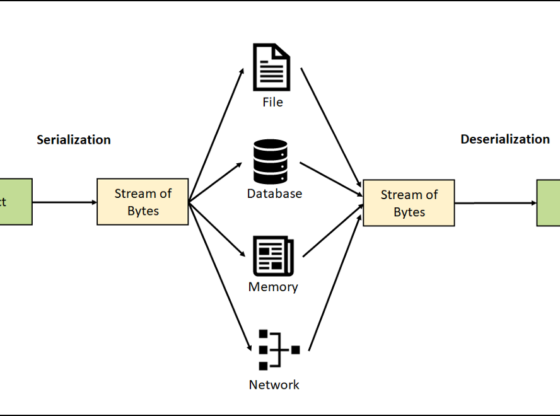In the realm of programming and data management, the process of deserialization, often abbreviated as “deseral,” holds a significant role. While serialization transforms data into a compact format for storage or transmission, deserialization is the reverse operation, reconstructing the original data from its serialized form. In this blog post, we’ll explore the concept of deseral, its importance, and practical implications.
Understanding Deseral
Deseral, short for deserialization, refers to the process of restoring serialized data back into its original format or structure. Serialized data, typically represented in a linear format, needs to be deserialized to regain its original hierarchical structure or object state. This process is essential for accessing and utilizing data that has been previously serialized.
Significance of Deseral
Deserialization serves several crucial purposes in software development and data management:
- Data Exchange: Serialized data is commonly used for exchanging information between different systems or components. Deserialization allows recipients to reconstruct the original data, enabling seamless communication and interoperability.
- Persistence: In applications where data needs to be stored persistently, serialization is employed to convert complex objects into a storable format. Deserialization is then utilized to retrieve and restore this data when required, maintaining its integrity and structure.
- Remote Procedure Calls (RPC): In distributed systems, RPC mechanisms often rely on serialization for parameter passing and result return. Deserialization enables remote procedures to process incoming data and execute operations on the server side.
Challenges and Considerations
Despite its utility, deseral presents certain challenges and considerations:
- Security Vulnerabilities: Deserializing untrusted or maliciously crafted data can expose systems to security vulnerabilities such as code injection or data tampering. Proper input validation and security measures are essential to mitigate these risks.
- Compatibility Issues: Changes to data structures or serialization formats over time can lead to compatibility issues during deserialization. Versioning strategies and backward/forward compatibility mechanisms are necessary to address these challenges.
- Performance Overhead: Deserialization can incur performance overhead, particularly for large or complex data sets. Optimizations such as lazy loading or selective deserialization can help improve performance and resource utilization.
Best Practices for Deseral
To ensure efficient and secure deserialization, consider the following best practices:
- Input Validation: Always validate serialized input to prevent injection attacks or data corruption.
- Use Trusted Libraries: Utilize established and reputable serialization libraries to minimize security risks and ensure compatibility across platforms.
- Versioning and Compatibility: Implement versioning strategies to handle changes in data structures or serialization formats gracefully, ensuring backward and forward compatibility.
- Performance Optimization: Optimize deserialization processes for efficiency, considering factors such as data size, complexity, and performance requirements.
Conclusion
Deserialization, or deseral, is a fundamental aspect of data management and software development. By understanding its principles, challenges, and best practices, developers can effectively leverage deserialization to facilitate data exchange, persistence, and remote communication in their applications. With careful consideration of security, compatibility, and performance, deseral can be harnessed to unlock the full potential of serialized data in modern computing environments.


